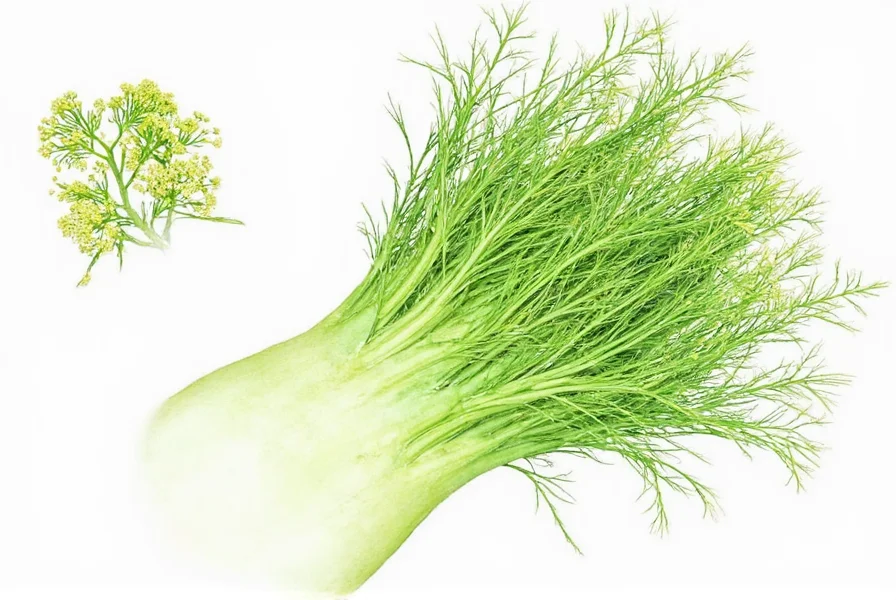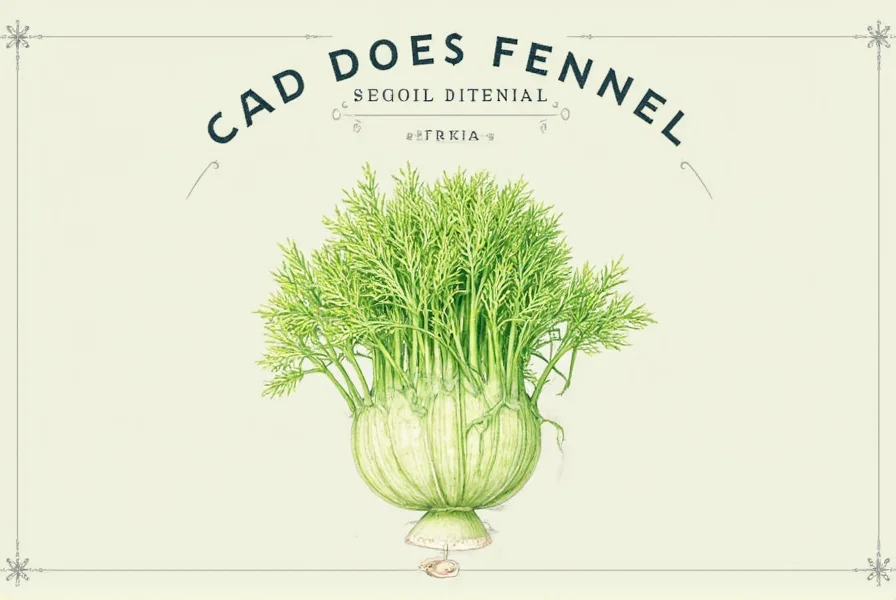Fennel, both a vegetable and an herb, presents a unique appearance that often confuses newcomers. Understanding what fennel looks like is essential for proper identification in grocery stores, farmers' markets, or gardens. This comprehensive visual guide breaks down every aspect of fennel's distinctive appearance to help you recognize it with confidence.
Breaking Down Fennel's Visual Characteristics
When examining what does fennel look like up close, you'll notice three distinct parts that work together to create its signature appearance:
| Part of Fennel | Visual Description | Texture |
|---|---|---|
| Bulb | Round to oval shape, typically 3-5 inches in diameter, with layered white to pale green segments | Firm, crisp, and dense with a slightly waxy surface |
| Stalks | Slender, hollow, bright green stems growing upward from the bulb | Crisp and slightly fibrous, similar to celery but more delicate |
| Fronds | Feathery, thread-like green foliage at the top, resembling dill but finer | Soft, delicate, and almost fern-like to the touch |
How to Identify Fennel: Key Visual Markers
When trying to determine what fresh fennel looks like at your local market, look for these specific visual indicators:
- Bulb appearance: The base should be firm, compact, and free of brown spots or soft areas. A high-quality fennel bulb appears tightly layered with no separation between the segments.
- Color variations: While the bulb is typically white to pale green, the outer layers may show hints of purple. The stalks and fronds should be vibrant green without yellowing.
- Size considerations: Mature fennel bulbs typically range from the size of a tennis ball to a small grapefruit, though larger specimens exist.
- Scent test: Gently brush the fronds or cut a small piece of the bulb—you should immediately detect a sweet, anise-like aroma.

Fennel vs. Similar Plants: Avoiding Common Confusion
Many people wonder what does fennel look like compared to celery or dill. While these plants share some visual similarities, key differences exist:
- Fennel vs. celery: Celery has solid, ribbed stalks that grow in a tight cluster without a bulbous base. Fennel features a distinct bulb at the base with thinner, more delicate stalks.
- Fennel vs. dill: Both have feathery fronds, but dill lacks the characteristic bulb. Dill fronds are slightly broader and less delicate than fennel's fine, thread-like foliage.
- Fennel vs.茴香 (Chinese fennel): While related, Chinese fennel has thinner stalks and less developed bulbs, with a stronger aroma.
Seasonal Changes in Fennel's Appearance
Understanding what fennel looks like throughout the growing season helps with proper identification:
- Early season: Young fennel has smaller bulbs with more prominent, vibrant green fronds.
- Peak season (late summer to fall): Bulbs reach optimal size with tight layers, while fronds remain lush but may show slight yellowing at the tips.
- Over-mature fennel: The bulb becomes woody and develops cracks, while the stalks toughen and the fronds turn brown.
Practical Tips for Visual Identification
When shopping for fennel, use these practical tips to confirm what does fennel look like when fresh:
- Look for bulbs that feel heavy for their size, indicating high water content and freshness.
- Check that the stalks stand upright rather than drooping, which indicates recent harvest.
- Examine the cut base of the bulb—fresh fennel shows clean, white layers without browning.
- Avoid specimens with flowering stalks, as this indicates the plant has passed its prime.
Using All Your Senses to Confirm Fennel's Identity
While visual identification is crucial, combining sight with other senses ensures accurate recognition of what fennel looks like and smells like:
- Scent: Crush a small piece of frond between your fingers—the distinctive anise/licorice aroma is unmistakable.
- Texture: The bulb should feel firm and dense, not spongy or soft.
- Sound: When breaking a stalk, fresh fennel produces a crisp snapping sound.
These multi-sensory cues help prevent confusion with visually similar plants, especially important when foraging wild fennel, which closely resembles poisonous plants like poison hemlock.
Conclusion: Confidently Identifying Fennel
Now that you understand detailed description of what fennel looks like, you can confidently select, identify, and use this versatile vegetable and herb. Remember the key visual markers: the distinctive white bulb, the bright green stalks, and the delicate, feathery fronds that release a sweet anise scent when touched. Whether you're shopping at the market or growing your own, these identification tips ensure you'll always recognize authentic fennel.
What does fennel look like compared to anise?
Fennel and anise are related but visually distinct. Fennel is a large plant with a bulbous base, tall stalks, and feathery fronds, while anise is a smaller herb with no bulb, featuring bushier growth and smaller, more rounded leaves. The fennel bulb resembles a small onion, whereas anise grows as a slender herb without this distinctive feature.
How can you tell if fennel has gone bad by looking at it?
Spoiled fennel shows several visual signs: the white bulb develops brown or black spots and becomes soft or mushy, the green stalks turn yellow or brown and become limp, and the feathery fronds wilt and turn brown. Fresh fennel should have crisp, vibrant green foliage and a firm, bright white bulb without discoloration.
What does wild fennel look like compared to cultivated fennel?
Wild fennel typically grows taller (up to 6 feet) with thinner stalks and a less developed bulb compared to cultivated varieties. The fronds remain feathery but may appear slightly more sparse. Both share the characteristic anise scent, but wild fennel often has a stronger aroma. The yellow flowers of wild fennel form large, flat clusters called umbels.
Does fennel look different when it's flowering?
Yes, mature fennel produces bright yellow flowers arranged in umbrella-shaped clusters called umbels. When flowering, the plant's energy shifts from bulb development to seed production, causing the bulb to become woody and less desirable for culinary use. The flowering stage is easily recognizable by these distinctive yellow flower clusters at the top of the plant.
What does baby fennel look like compared to mature fennel?
Baby fennel features a smaller, more tender bulb (about the size of a golf ball to tennis ball), with thinner stalks and more delicate, vibrant green fronds. The layers of the bulb are less defined, and the entire plant has a more tender appearance. Baby fennel lacks the slight woodiness that can develop in larger, mature bulbs, making it particularly prized by chefs for its tenderness.











 浙公网安备
33010002000092号
浙公网安备
33010002000092号 浙B2-20120091-4
浙B2-20120091-4